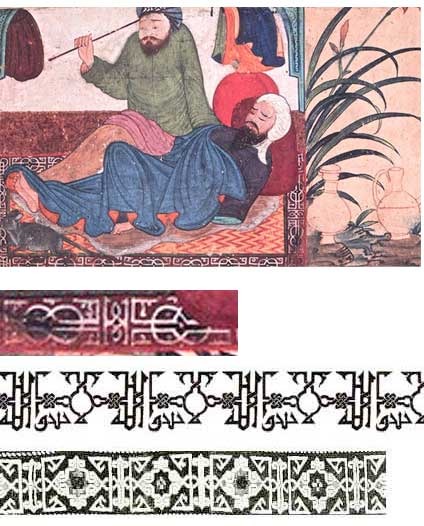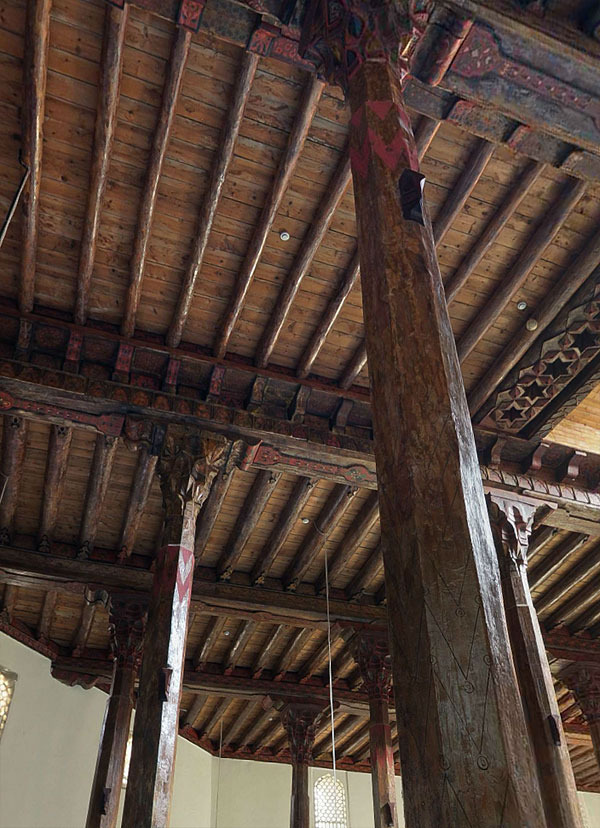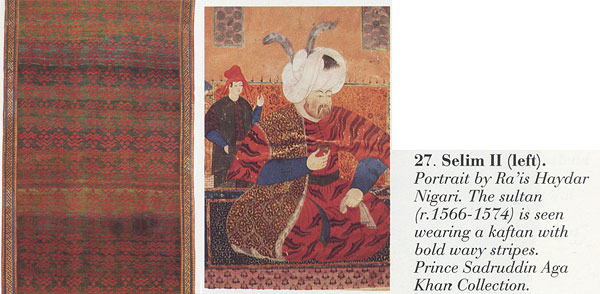|
|||||||
 |
|
|
Thread Tools | Display Modes |
|
|||||||
 |
|
|
Thread Tools | Display Modes |
|
|
|
|
#1 |
|
Members
Join Date: Jul 2008
Posts: 121
|
Hi All
I am just looking around in this highly interesting series of essays and discussions. And can't escape my narrow tunnel vision on the kufic border. With no intention to highjack this tread, I can't help putting in a note regarding "The guest beats the mouse"-rug. As Pierre has pointed out the border looks kufic, and to me it looks very directly related to how the kufic border ended up in the caucasian versions:  best Martin Last edited by Martin Andersen; September 11th, 2012 at 07:57 AM. |
|
|

|
|
|
#2 |
|
Administrator
Join Date: May 2008
Posts: 121
|
Hi Martin
I don't want to inhibit discussion of this very interesting subject, but I have inside information that an essay outlining the timeline of development of kufic borders will appear within a few days. For that reason, it might be easier and less awkward to delay following up on this for a short time. Regards Steve Price |
|
|

|
|
|
#3 |
|
Members
Join Date: Jul 2008
Posts: 121
|
Hi Steve and All
I will save the kufic topics for the new essay, i am sure it will be very interesting. In the mean time here is a photo related to the wave/zig-zag pattern discussed in this tread:  I am generally convinced that the rugs have been an integrated part of a total setting in which the architecture have played a huge role. The pillars in the Seljuk Eşrefoğlu Mosqu still have reminiscences of their original colour in the top. Lots of ornamentation in stucco and paint have been lost during time. And these perhaps less prominent and luxurious ornamentations is probably slightly overlooked in the published material. One could hope that there still may be old survived material away from the touristic main sites. The problem is were to look for it, hopefully there is an increasing awareness of cultural heritage in all of the Islamic world. I will (inshallah) be in Konya and Beyşehir next week, bringing my camera and tunnel vision regarding the Seljuk ornaments and the kufic border  best Martin. Last edited by Martin Andersen; September 12th, 2012 at 11:29 AM. |
|
|

|
|
|
#4 |
|
Members
Join Date: Oct 2009
Posts: 153
|
Hi Martin,
I agree, there is an interesting analogy between this Il-khanid kufic border and the (500-600 years younger) Caucasian / Kuba rug border. You must have got an eagle eye,  indeed the "wave" motif on top of the columns in the mosque is identical, including the odd little hook, with the motif of the Il-khanid rugs shown in this thread. Assuming that the Seldjuk builders of the mosque were also responsible for the painting of the column it would prove that the motif pre-dated the Il-khanid period and that it was used (also) in Anatolia (where, by the way, except for a trail of destructions, the Il-khanid did not stay) . indeed the "wave" motif on top of the columns in the mosque is identical, including the odd little hook, with the motif of the Il-khanid rugs shown in this thread. Assuming that the Seldjuk builders of the mosque were also responsible for the painting of the column it would prove that the motif pre-dated the Il-khanid period and that it was used (also) in Anatolia (where, by the way, except for a trail of destructions, the Il-khanid did not stay) .Enjoy your stay in Anatolia! I am very much looking forward to your pictures. Best regards Pierre |
|
|

|
|
|
#5 |
|
Members
Join Date: Jul 2008
Posts: 121
|
Hi Pierre
The Eşrefoğlu Mosque is build 1296, so its very late Seljuk, I suppose one could say its contemporary to the rugs on the Il-khanid miniatures. The wave zig-zag pattern is not only painted but also carved into the pillars, you can see it at the bottom. Personally I think its original, stylistically it fits in for me (as opposed to the brand new terrible wall-to-wall carpeting  ) )best Martin |
|
|

|
|
|
#6 |
|
Members
Join Date: Oct 2009
Posts: 153
|
Hi Martin,
I did not know it was as late as that. Anyway, I suppose that the Seldjuk style did not disappear everywhere shortly after the Mongol/Il-khanid raids in Anatolia, as destructive as they might have been. Unless I err, several Beylicks (the little states which dotted Anatolia between the end of the Seldjuk of Rum Empire and the Ottoman leadership) were ruled by Seljuk offspring. Besides, the artisans of Konya for example could have kept the style alive for a while, independently of the ethnic origin of the new political power in place, just as french artisans kept making furniture in Louis XIII style even during the following reigns in which each successive king tried to impose his own style. However the presence of the "waves with hook" on Anatolian Seldjuk monuments and on Il-khanid rugs suggests that this motif was known both in Anatolia and in Persia, perhaps imported by the previous (Oghuz) Turkik waves which swept both regions.  Best regards Pierre |
|
|

|
|
|
#7 |
|
Members
Join Date: Jul 2008
Posts: 121
|
Hi Pierre
Waves and zig-zag are very generic patterns, so unrelated origins is of course a highly likely possibility. But the combination between the zig-zag and the little dot/device at the top of the waves is a bit more specific, so I would agree on an earlier common source. Totally speculative but one could perhaps suggest a relation to the cintamani motif, which as one of multiply interpretations is often seen as a pearl/jewel floating on the top of the ocean (sorry for yet another tunnelvison topic  ) )  best Martin |
|
|

|
 |
|
|